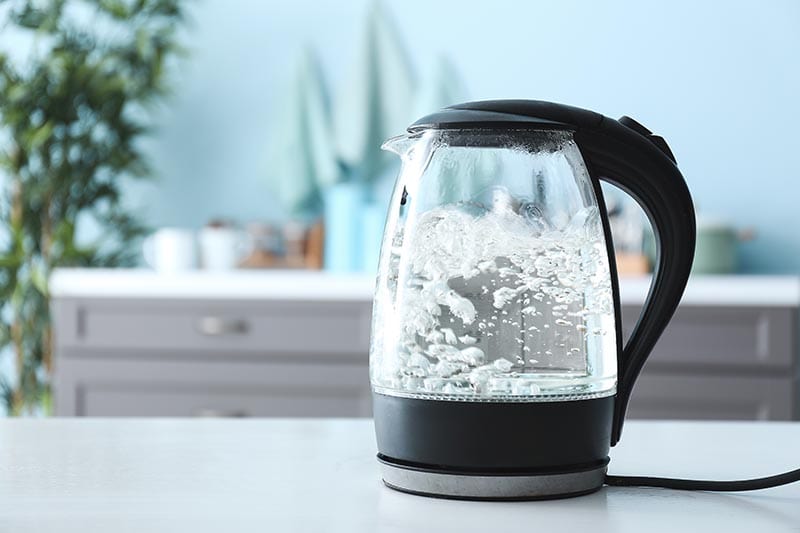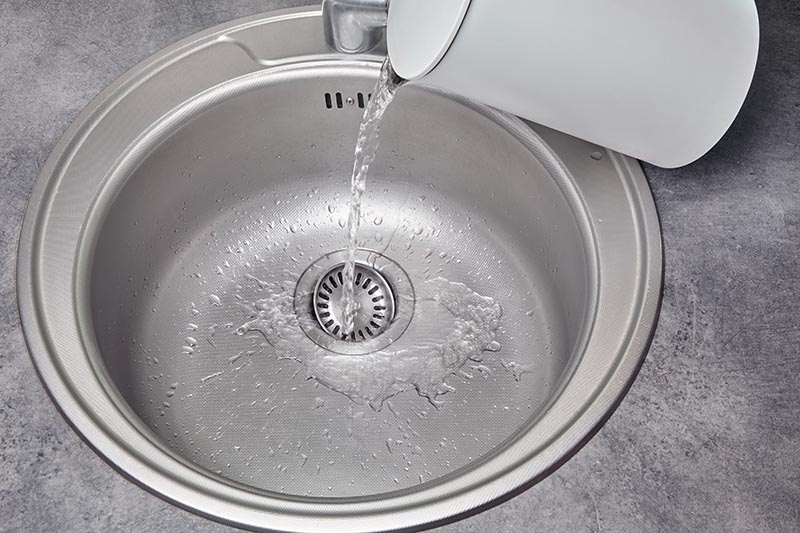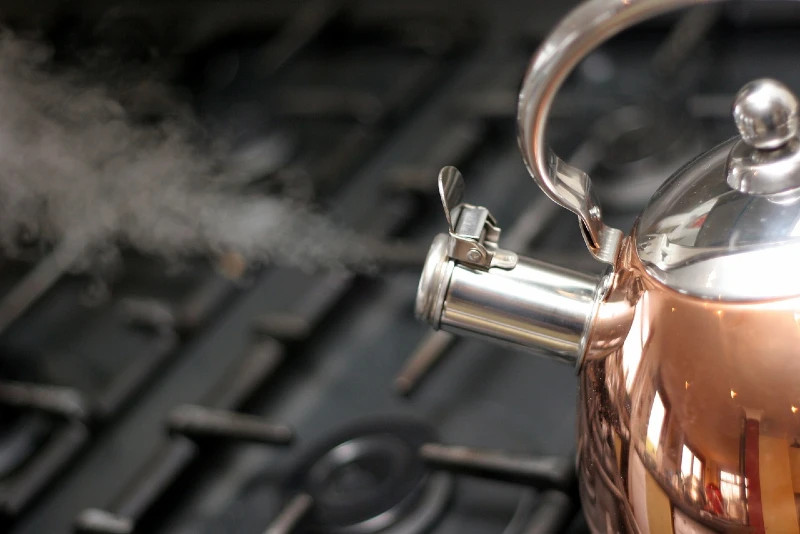Can You Pour Boiling Water Down the Drain? The Surprising Answer!
-
- Last updated:

It’s not uncommon to see a household member pour boiling water down the drain, especially while preparing a scrumptious dish of spaghetti. Most of us are guilty of it, even though deep down, we know it’s probably wrong. “Probably” being the operative word because the answer you’re looking for isn’t so clear cut. There isn’t a clear yes or no answer so keep reading to find out more!

Is It Safe to Pour Boiling Water Down the Drain?
Pure water boils at 212ºF. Emphasis has to be placed on “pure” since impurities are notoriously known to raise the boiling point of any liquid. 212ºF means it’s hot enough to affect the pipes in your drainage system to some degree.
Most residential buildings have pipes made of PVC plastic, CPVC, Pex, galvanized steel, copper, or iron. If your drainage pipe material is PVC, CPVC, or Pex, you shouldn’t be pouring boiling water down the drain. These three materials cannot withstand temperatures that are above 200ºF.
Galvanized steel, copper, and iron can withstand temperatures of 329ºF, 1981ºF, and 2570ºF, respectively. Therefore, if your piping system is made of any one of these materials, you don’t really have to worry about the impact that boiling water will have on them. However, if the joints are made of plastic or rubber, you’ll have to pour that water somewhere else.

Can You Use Boiling Water to Clear a Clogged Drain?
Yes, but only if it’s a minor clog, and the piping system is not made of Pex PVC or CPVC. You can slowly pour the water directly down your drain and see what happens. If the trick works, good for you. But if it doesn’t, you’ll have to try something different.
We suggest you try baking soda and vinegar—a DIY concoction that’s proven to be effective. The mixture’s ratio should be 1:1, and you’ll know you’ve got it right the minute it starts to fizz—from our experience, the fizzing almost always starts immediately.
It only takes an hour or less for a vinegar-baking soda solution to get the job done. But if you’re concerned about the severity of your drainage situation, let it sit overnight. When you wake up early in the morning, rinse the drain using hot water.
Should the problem persist, try another solution. But this time around, replace the vinegar with salt. The mixture’s ratio should still be 1:1, and it should not sit for more than 20 minutes from the moment it was applied if the pipes are made of iron. Salt solutions are known to speed up rusting.
Are Chemical Drain Cleaners More Effective Than Boiling Water?
For starters, it’s important to take note of the fact that we have two types of chemical cleaners—caustic and oxidizing cleaners. A caustic cleaner will rely on hydroxide ions and an alkaline solution to break down the clog in your system.
Once you’ve applied the cleaner, you’ll be able to see a reaction that generates heat, meant to transform grease into soap. When the reaction stops, you’re supposed to flush down the residue using cold water.
Oxidizing cleaners also generate heat energy, but they are different in the sense that they rely on their nitrate compounds to break down the clog’s organic matter. Both cleaners are effective, particularly while trying to remove the toughest clogs, but how you use them is what really matters.
Ask any professional plumber how many incidents they’ve had to deal with where a chemical cleaner was involved. The situation can quickly become volatile if you don’t follow the instructions laid out for application.
Side Note: If your pipes have been damaged by chemical cleaners, you must let the plumber know beforehand. That piece of information will help them determine what special steps to take while working on the repairs to ensure they are not exposed to any health risks.
Are Chemical Drain Cleaners Considered a Health Hazard?
Chemical cleaners are not the typical liquid or spray cleaners that are designed to help you effectively get rid of germs on the kitchen counter or toilet bowl. You must be cautious while handling these cleaners, bearing in mind that their reactions are so powerful that they can quickly dissolve organic matter.
A study published in the National Library of Medicine found that there are more than 3,000 injuries related to chemical drain cleaners reported annually. Most of those injuries are skin burns, close to a third of them being classified as severe.
There are so many ingredients used in the production of these cleaners, but the most common ones are sulfuric acid and lye—by the way, lye is what we call sodium hydroxide. At room temperature, lye often takes on a solid state. When you dip it into pure water, it quickly dissolves, generates heat, and the solution becomes a very corrosive alkali.
You’re advised to put on protective gear while handling lye, as it’s known to cause skin and eye irritation.
Sulfuric acid, on the other hand, is a mineral acid. This ingredient is also very corrosive, as it can cause tissue damage and severe burns.

Are Physical Implements More Effective Than Boiling Water?
We prefer unclogging our drains using physical tools because they are affordable and cheaper in the long run. A chemical cleaner is a one-time-use product, whereas a drain cleaning tool is something that can be used over and over again. At the store, you’ll find three types of clog removal tools: the plunger, plastic-toothed drain snake, and drain rooter.
Of the three, the most popular is the plunger. We all use some type of plunger in our lives. There’s the common toilet plunger, and then there are a few iterations that are designed to be used in a kitchen setup. The kitchen plungers are relatively smaller in size.
The drain snake is a simple piece of equipment that has an ergonomic design. It’s mostly useful in mild situations, meaning you’ll have to settle for a more aggressive method if the clogs are not within reach.
This tool usually has several other names, such as the auger wand and drain opener. When it comes to usage, it’s appropriately fashioned with teeth to unclog the bathroom sink or shower drains that are full of hair. Unfortunately, it cannot be used in the toilet or kitchen due to its small size.
The drain rooter is the perfect solution for deeper clogs that are a tad bit more stubborn in nature. It has all the features of a drain snake in addition to an electric or gas motor. The motor is well-equipped to deal with small to midsize clogs but try not to be too aggressive while using it. Otherwise, it will jam inside the pipes, and you’ll be forced to call in the plumber.
How Do You Prevent Your Drains from Clogging?
Firstly, don’t flush anything down the drain that’s not flush-friendly. We often see a lot of people try to flush things like fruit peels, scraps, grease, wipes, and several other hygiene products, not knowing that they are the main reason why drainage systems clog now and then. Even if you think your disposal is top-notch, explore a different option.
Secondly, install a hair trap over your shower drain. We’ve used those traps long enough to know they are very effective and pocket friendly. Lastly, watch out for leaks. The leaks will precipitate the growth of mold and dry rot, which will in turn clog your drains.

Final Thoughts
Boiling water has never been a solution to clogged piping systems. It might help alleviate the situation if we’re talking about minor blockages, but not in cases involving CPVC, PVC, or Pex piping materials. Don’t hesitate to reach out to a professional plumbing company should you need some level of assistance. Trying to solve the problem without any basic plumbing knowledge could worsen the situation.
Featured Image Credit: Pixel-Shot, Shutterstock
Contents

